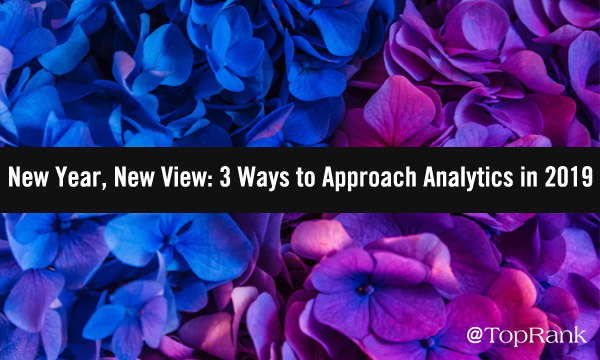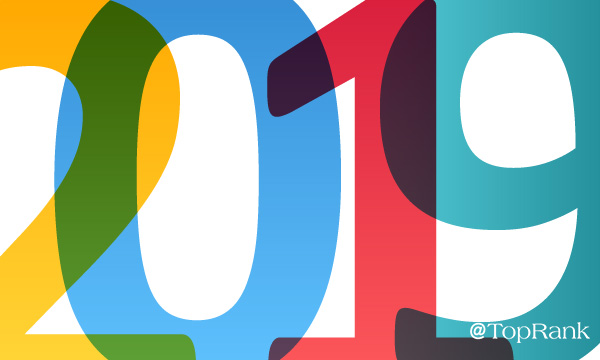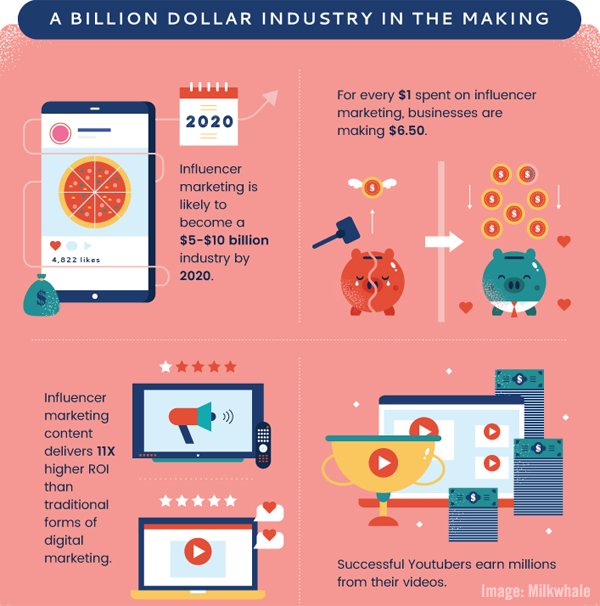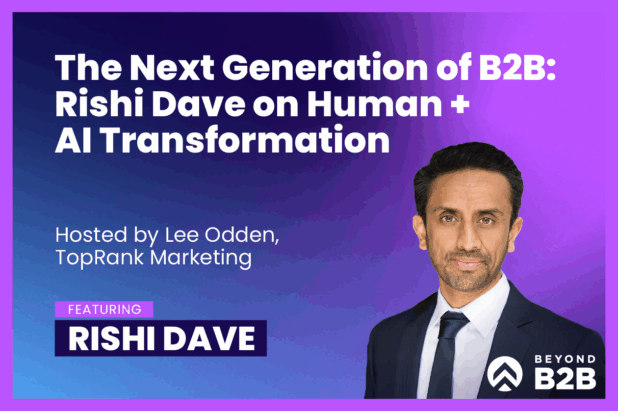
Welcome to the eighth installment of our “Collective Wisdom” series, featuring wisdom from a wide swath of thought leaders in the digital marketing industry and beyond.
This year, with the help of many great minds, we’ve covered the full range of content marketing tactics and best practices, including planning ahead for success, the art of crafting powerful content efficiently, and several strong promotion tactics. Most recently, we also dove into analytics and how they can best be used to measure content marketing success.
Now, with the new year drawing closer, let’s continue our exploration of content marketing measurement with an eye to the bright future ahead.
#1 – Widen Your Analytics Scope

Since shortly after the creation of the Web, analytics has always had some form of search ranking system as an important core measurement for helping people find relevant information.
Google’s Larry Page and Sergey Brin created the PageRank search results algorithm in 1996. And each year since, earnest attempts have been made to improve the way we rank and measure the world’s vast and ever-expanding living archive of online content.
The ultimate search engine would understand exactly what you mean and give back exactly what you want. — Larry Page Share on XOrganizing all the content in the world by rankings, is in a way the root of modern analytics. So, it isn’t surprising that portions of Page and Brin’s system for ranking online content remained in use and available to the public all the way until early 2016.
As the Web has matured, I see a shift towards the eventual creation of a more dependable and universal ratings and measurement ranking system, incorporating a dozen or more separate rating and ranking systems from both existing services and new tools that will roll out in 2019 and beyond.
Such a system would likely incorporate certain signals picked up from the latest artificial intelligence, voice search, and even chatbot activity log analysis. These areas have grown at a rapid rate, as Purna Virji, Senior Manager of Global Engagement at Microsoft, has spoken about this year.
For the chatbot to be truly helpful as an influencer, it needs to learn from each conversation. It needs to remember what you shared from the last conversation, and use it to shape future conversations. — Purna Virji @purnavirji Share on X
The inventor of the Web, Sir Tim Berners-Lee, has shed some light on a future that I believe is likely to include a universal analytics system bigger in scope, more accurate, and more useful than any of those we already use.
The Web as I envisaged it, we have not seen it yet. The future is still so much bigger than the past. — Sir Tim Berners-Lee @timberners_lee Share on XA global analytics system has always faced significant political, bureaucratic, and commercial challenges. However, 2019 may be the year when major strides are made in implementing a truly better way to rank and relate various online content.
Berners-Lee has recognized the challenge and hinted at solutions, which I believe are now on the not-so-distant horizon.
I'm not a fan of giving a website a simple number like an IQ rating because like people they can vary in all kinds of different ways. So I'd be interested in different organizations labeling websites in different ways. @timberners_lee Share on XAs always, the devil is in the details and particulars, and there is the risk that the world’s vast online content collective is now simply too varied for any new analytics methodology to be implemented.
Berners-Lee built in measures to help prevent power imbalances, however.
The trick... is to make sure that each limited mechanical part of the Web, each application, is within itself composed of simple parts that will never get too powerful. — Sir Tim Berners-Lee @timberners_lee Share on XHe’s also made reference to A.I.’s potential role in overcoming the types of challenges that a universal analytics system would surely face.
“[With A.I.], somebody’s going to have to think of a completely new algorithm, a new way of doing goal-based planning,” Berners-Lee has said.
Others envision new methods for learning about customers in ways that could be incorporated into future analytics systems, such as Automat CEO Andy Mauro.
Rather than tracking users with pixels and cookies, why not actually engage them, learn about them, and provide value that actually meets their needs? — @andymauro Share on XRobert Rose, Chief Troublemaker at The Content Advisory, has recognized that even the best analytics have limitations.
True measurement is designed, it’s not just a simple dashboard. Great measurement means walking out of our cubes, meeting the front-line people, and working out the meaning behind the numbers. @Robert_Rose Share on XSo, as we head into 2019, marketers should keep a watchful eye on the innovations that are to come, as well as think differently about how they can and should measure performance and assess success.
#2 – Go From Boring Statistics To Being The Best Answer

The word “statistics” has seen a steady drop in usage among Google search queries since 2004. Searches for the word “answers” has risen during the same period of time, according to Google Trends data. This trend appears likely to continue in 2019 and beyond. Word usage changing over time is nothing new, and with “statistics” — a dry, stodgy term at best — the trend has been to use the terms analytics, metrics, measurement, and certainly the more generic “answers.”
As more people than ever are searching for answers online, it’s no surprise that a “Be the Best Answer” philosophy has featured heavily in TopRank Marketing’s work, such as the success stories our CEO Lee Odden outlined in one of our most popular posts of the year, “32 B2B Content Marketing Case Studies for 2018.”
With improved analytics and the higher-quality data insights they can deliver, organizations should grab hold of their data and strive to create content experiences that provide the best answer to queries.
A best answer strategy maps a connection between influence topics and content for PR and media relations as well as marketing tactics like content, social, SEO, advertising and influencers. @LeeOdden Share on XThe rise of answer boxes — or featured snippets — may also continue throughout 2019, a powerful trend that Courtney Cox Wakefield, Manager of Digital Marketing at Children’s Health, explored in an interview with our own Senior Digital Strategy Director Ashley Zeckman in “CMWorld Interview: Thinking Inside the (Answer) Box with Courtney Cox.”
In my experience, most websites are not well-optimized for the answer boxes, and they’re ranking through dumb luck. @CourtEWakefield Share on X#3 – Be Ready for the Confluence of Influencer Marketing & Analytics

Utilizing smart data analytics to power a new and even more relevant and authentic iteration of influencer marketing may also be in the cards for 2019, as the benefits of informed analytics applied to influencer marketing grows.
Influencer marketing has seen continued growth, with multiple recent estimates predicting it as a $10 billion industry by 2020, with 35 % growth through 2025.

Each year the digital marketing industry offers up new tools with more robust information-gathering features, which can help refine a successful influencer marketing strategy, improve analytics performance, and help in discovering new ways to be the best answer for clients.
With stronger analytics and continued innovation, technologies are also bound to improve the influencer vetting process, and bring to prominence influencers with a more genuine passion for the things that matter most to businesses. And this is something marketers should certainly take advantage to retool their approaches and strategies in the new year.
Our own Content Strategist Anne Leuman has recently taken a close look at seven marketing technology tools and platform features that B2B marketers can use to boost their efficiency.
New marketing tools and features are being constantly released, and it’s up to you to evaluate them to see if they’re a good fit for your team and your overall marketing goals. — Anne Leuman @annieleuman Share on XPost-Analytics Review — Take A Good Look Back
Whatever 2019 actually holds in store for digital marketers, studying how Web pioneers including Berners-Lee, Page, and Brin initially envisioned analytics and what they now hope to someday see, along with keeping a close eye on trends such as being the best answer, your own analytics strategies are bound to grow stronger. We hope a look at some of these rising trends gives you food for thought in ways that you can improve your approach to measuring content effectiveness and performance.
Interested in more trends and predictions for 2019? Have a look at our helpful year-end insight including:
- TopRank Marketing’s Top 6 B2B Social Media Marketing Predictions & Trends to Watch in 2019
- TopRank Marketing’s Top 6 SEO Predictions & Trends for 2019
- TopRank Marketing’s Top 10 B2B Content Marketing Trends & Predictions for 2019
Up next in our “Collective Wisdom” series, we’ll reflect on the sum of all the various tactics and techniques we’ve explored.
If you haven’t yet caught our previous seven pieces in this series, it’s not too late to jump back and study up:
- “How to Boost Your Content Marketing Efforts By Planning Ahead”
- “The Art Of Crafting More Powerful Content: 5 Top Tactics from the Experts”
- “5 Powerful Messaging Tactics For 2019 And Beyond From Marketing Experts”
- “Don’t Blink: 3 Often-Overlooked Practices for Highly-Effective Content Creation”
- “Step Right Up! 8 Content Promotion Showstoppers For 2019“
- “Spicy Twists and Tactics For Unique Content Promotion”
- “Measuring Content Marketing Success: Analytics Advice & Insight from the Experts”


